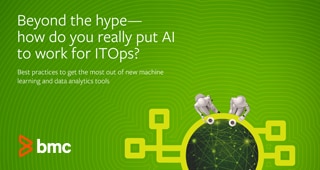
IT services now sprawl from a wider range of resources to a wider range of audiences in most digital business environments—thanks to the cloud. A lot of IT services are now offered with just three or four clicks on the Internet and a credit card to make it easier than ever.
For example, let’s take a group of developers who have been tasked to make one of their mission critical apps run faster, with more functionality, and be delivered quickly. Why would they want to take the time to provision their infrastructure with traditional IT approaches when they can get started right now—turning to AWS, Azure, OpenStack and others—to quickly have an environment in place right away?
The win here is that this team is up and running quickly and producing results, typically in a development environment. But what happens when it’s time to scale in production? They have not been too concerned with monitoring in their original environment because they just wanted to get the functionality in place to deliver the faster app with enhancements to functionality.
Once they go to production, everything gets messy. Their line of business owner, although pleased with the results, starts clamoring about budgets. Which cloud provider is going to be the best solution for production? Are their costs associated with run-time environments that could sky rocket without the proper visibility? What happens when the infrastructure is maxed out or part of the application delivery fails?
After some analysis and partnering with the IT team, they decide to host parts of the application in a public cloud and the storage on premise in a more traditional database server farm. Some organizations like this group might also have some backend processing that is still running on mainframe technology.
In one scenario, they could rely on the native monitoring that might be available on some of these technologies or they could have some “point” solutions to gather logs or monitor application performance. Some of the cloud environment might not have the same visibility they are used to and they are left with the fear that their production environment could fail. They will not be able to address the issues quickly with a patchwork of legacy tools and environments.
In a better scenario—as one of our BMC customers at Ensono, a leading IT infrastructure provider, put it—“This patchwork of diverse tools worked well in the past. To support today’s complex IT needs, however, we need a sophisticated, holistic monitoring strategy that covers mainframe to cloud and everything in between.”
For IT initiatives like these, clouds just won’t go away in today’s digital business. Whether it’s SaaS, PaaS, IaaS, or you-name-it as a service, cloud provides us with nimble, scalable infrastructure so that anybody and any organization can quickly do just about any digital activity by giving up some control and paying as they go.
Check out the hottest new cloud initiatives for TrueSight Operations Management:
- Comprehensive monitoring for both AWS and Azure infrastructure environments with TrueSight Operations Management
- Real end-user monitoring with a software edition of TrueSight APM that can be installed directly in any hosted or private cloud environment
- Agile, second-by-second monitoring and analytics with TrueSight Pulse and TrueSight Intelligence
Get started today.
TrueSight Operations Management Free Trial – BMC
Where to next?
Get practical guidance for AIOps
These postings are my own and do not necessarily represent BMC's position, strategies, or opinion.
See an error or have a suggestion? Please let us know by emailing blogs@bmc.com.







